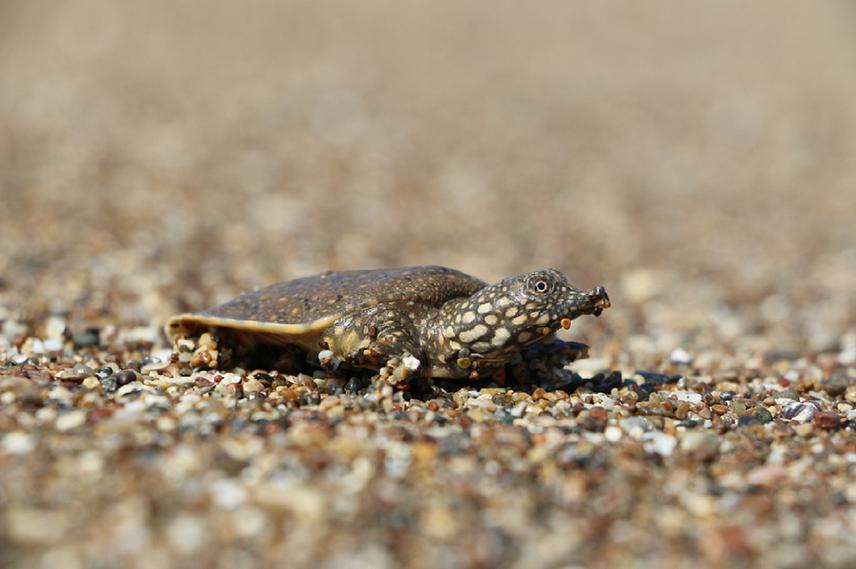Fatih Polat
Other projects
Nile softshell turtle (Trionyx triunguis) is a carnivorous brackish turtle belonging to the Trionychidae family (softshell turtles). They make their nests on beaches and sand dunes close to rivers, lakes and ponds. This species is distributed across Turkey, Egypt, Syria, Lebanon, Israel, and Greece in the Mediterranean. Their numbers are decreasing day by day as a result of the loss of their natural environments, especially due to the increase in human activity and construction in their living areas. Apart from these, bycatch, pollution, and global climate change are also among reasons that threaten this species. In this project, it was aimed to determine the current nesting potential and nest parameters of the endangered Trionyx triunguis. In addition, within the scope of the project, studies will be carried out that will contribute to raising awareness of the species among stakeholders and the public, and to conservation measures.

Juvenile Trionyx triunguis.
The study will be carried out in Ilıca and Kömürcüler Streams of Manavgat district. Research, conservation and monitoring studies will be carried out in the regions where Trionyx triunguis was detected. Ilıca and Kömürcüler rivers will be checked in the mornings before human activity increases (05:00 AM-09:00 AM), and nest locations will be determined and recorded. The traces left by the adults when they go ashore will be followed and their non-nesting and nested emergences will be determined. For nested emergences, nests will be dug in a controlled manner in order to obtain egg data. In order to measure the temperature inside the nest, first, half of the eggs that have been taken out will be put back into the nest, then the temperature measuring data logger (Gemini TinyTag2 Data logger) will be placed, and then the remaining eggs will be placed in the nest. The area name, nest number, date, total number of eggs and nest coordinates of the detected nest will be recorded on forms.
With this study, more detailed information about the species will be obtained by revealing the morphology, bio-ecology, reproductive status, habitat and abiotic and biotic factors that threaten the species. This information will provide important contributions to the literature for future studies and will form a basis for the correct design of protection measures to be taken.
Header: Adult Trionyx triunguis.